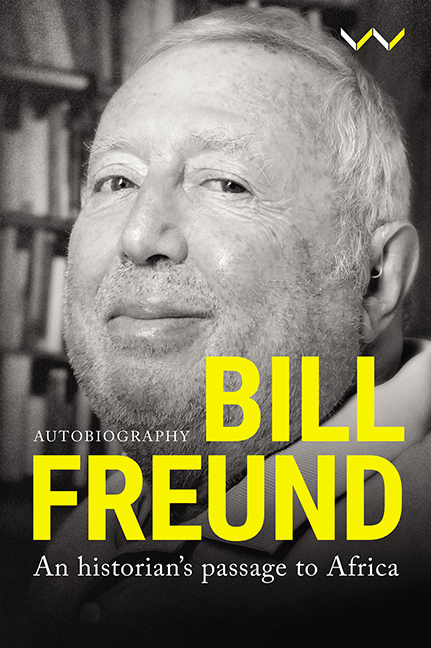Book contents
- Frontmatter
- Contents
- Foreword: Bill Freund and the Making of His Autobiography
- Family Tree
- A Brief Introduction
- 1 The Austrian Past
- 2 The Aftermath of War: A Perilous Modernity
- 3 The Dark Years
- 4 A New Life in America
- 5 Adolescence: First Bridge to a Wider World
- 6 As a Student: Chicago and Yale
- 7 As a Student: Africa and England
- 8 The Tough Years Begin
- 9 An Intellectual and an African: Nigeria
- 10 An Intellectual and an African: Dar es Salaam and Harvard
- 11 South Africa, My Home
- Notes
- Select Bibliography of Bill Freund’s Publications
- List of Illustrations
- Author’s Acknowledgements
- Supplementary Acknowledgements
- Index
1 - The Austrian Past
Published online by Cambridge University Press: 15 June 2021
- Frontmatter
- Contents
- Foreword: Bill Freund and the Making of His Autobiography
- Family Tree
- A Brief Introduction
- 1 The Austrian Past
- 2 The Aftermath of War: A Perilous Modernity
- 3 The Dark Years
- 4 A New Life in America
- 5 Adolescence: First Bridge to a Wider World
- 6 As a Student: Chicago and Yale
- 7 As a Student: Africa and England
- 8 The Tough Years Begin
- 9 An Intellectual and an African: Nigeria
- 10 An Intellectual and an African: Dar es Salaam and Harvard
- 11 South Africa, My Home
- Notes
- Select Bibliography of Bill Freund’s Publications
- List of Illustrations
- Author’s Acknowledgements
- Supplementary Acknowledgements
- Index
Summary
The story of this Chicago-born American who would later settle in Africa and whose life's work sought to understand that continent starts in central Europe, for that is where my family came from. Theirs is mostly the story of Austrians, of Jewish people who lived in Austria both after 1918 and before then, when Austria was a vast continental empire of fifty million people and, as such, one of the Great Powers of Europe. My aunt Gerti, who died in 2016 close to the age of 98, must have been one of the last living individuals born a subject of Kaiser Karl and the empire, which collapsed when she was a few weeks old. Her husband, my uncle Henry, always remembered having once as a child seen Karl on horseback.
Taken as a whole, this was not a territory that, like Britain or Germany, had any chance of becoming a nation-state with a clear, generally accepted national identity. It was an empire like Russia or Turkey and what held it together was the ancient Habsburg dynasty, an estate-owning aristocracy from many different provinces, and a considerable and relatively efficient bureaucracy typical of the absolute monarchies of early modern Europe. The other element was the Catholic Church, the Habsburgs having identified themselves totally with the Counter-Reformation.
At the centre of the empire lay Vienna, in early modern times the biggest German-speaking city in Europe with a large and varied population of artisans, tradesmen and serving people who worked for the Habsburg ruling class. That class held estates all over the empire but desired palaces of their own in the walled city. Vienna was a city, like Paris, with a distinct flavour and a distinct urban culture where Baroque splendour largely effaced what remained of the Middle Ages.
In the early modern period, the Habsburgs had three glorious victories that complemented their famous policy of expeditious dynastic marriages, their lucky string of long reigns and their endless wars to defend the territorial gains that were consequently made. As a result of the Thirty Years War they acquired, among other things, the largely Czech-speaking provinces of Bohemia and Moravia. With their victory over the Turks in the late seventeenth century, they took control of all of Hungary.
- Type
- Chapter
- Information
- Bill FreundAn Historian's Passage to Africa, pp. 5 - 16Publisher: Wits University PressPrint publication year: 2021

